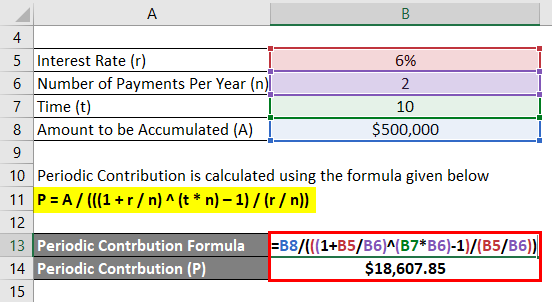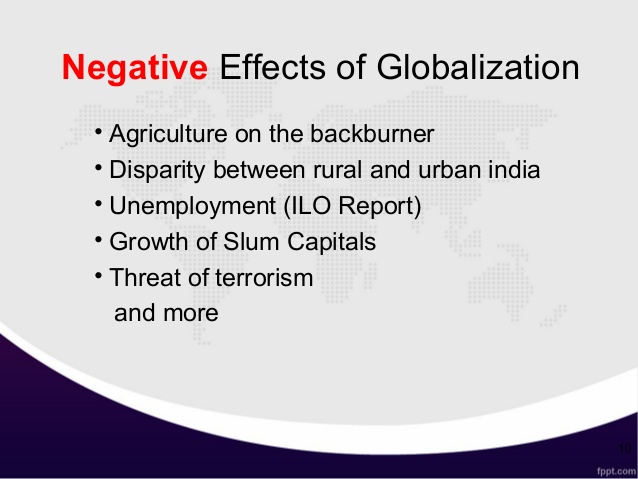Define Green Shoe Option G S.O study Material lecturing Notes assignment reference wiki description explanation brief detail
- 18/08/2021
- Author : admin
Contents:


The demand for the stocks in the market can be known once the issue is closed. If the investors partake in this IPO, they must ensure that they pay the full price of the shares when making the application. Once the IPO is done, the shares of the firm are listed and can be traded freely in the open market. The stock exchange imposes a minimum free float on the shares both in absolute terms and as a ratio of the total share capital. Investment banks and underwriters that participate within the greenshoe process can train this selection if public demand exceeds expectations and the inventory trades above the offering price. The above option is primarily used on the time of IPO or listing of any inventory to make sure a successful opening value.

In private placements a company may offer shares to major investors such as banking and hedge funds. In preferential allotments the company may sell shares to selected potential investors at a value unavailable to any other investor. In the context of an initial public offering , it is a provision in an underwriting agreement that grants the underwriter the right to sell investors more shares than initially planned. Companies eager to venture out and sell shares to the general public can stabilize initial pricing by way of a authorized mechanism called the greenshoe possibility.
Access to Capital
Similarly, if the shares trade below the offer price, it may create a wrong impression in the minds of the investors and they may sell the shares they have bought or stop buying more from the market. In such a scenario, to stabilise share prices, the underwriters exercise their option and buy back the shares at the offer price and return the shares to the issuer. In the entire process the company has no role to play and any gains or losses arising out of the green shoe option belongs to the underwriters. The greenshoe option, also known as the overallotment option, allows the underwriters to sell more shares during the initial public offering.
Allotments shall be given from the date of incorporation of the issuer. In case of partial underwriting of the issue, the extent of underwriting. The details of all the grades obtained from such credit rating agencies.
History of IPOs
If you are green shoe option meaninging in IPOs, you should make sure to invest wisely. Before joining the bandwagon, one must be clear on what the basics are. With many companies gearing up for an initial public offering , one will encounter terms such as ASBA, book building, anchor investors and the like in the coming days. AGreenshoe optionallows the group of investment banks that underwrite an initial public offering to buy and offer for sale 15% more shares at the same offering price than the issuing company originally planned to sell. The greenshoe option provides stability and liquidity to a public offering. As an example, a company intends to sell one million shares of its stock in a public offering through an investment banking firm which the company has chosen to be the offering’s underwriters.
This option permits the underwriters to buy up to an additional 15% of the shares at the offer price if public demand for the shares exceeds expectations and the share trades above its offering price. Green shoe option is also known as an over-allotment provision. The above option is primarily used at the time of IPO or listing of any stock to ensure a successful opening price. Accordingly, companies can intervene in the market to stabilise share prices during the first 30 days’ time window immediately after listing.
Allowing owners and early investors to sell their stake to make money
A block construct that is accelerated is incessantly implemented in a single day, with the issuing firm contacting numerous funding banks that may function underwriters on the evening previous to the meant placement. The issuer solicits bids in an auction-type course of and awards the underwriting contract to the bank that commits to the very best again cease worth. The underwriter submits the proposal with the worth vary to institutional traders.
- Investment banks and underwriters that take part in the greenshoe course of can exercise this option if public demand exceeds expectations and the inventory trades above the providing price.
- The underwriter also guarantees that a specific number of shares will be bought at that preliminary price and will buy any surplus.
- Tech IPOs multiplied on the peak of the dot-com increase as startups with out revenues rushed to record themselves on the stock market.
Please note that your stock broker has to return the credit balance lying with them, within three working days in case you have not done any transaction within last 30 calendar days. Please note that in case of default of a Member, claim for funds and securities, without any transaction on the exchange will not be accepted by the relevant Committee of the Exchange as per the approved norms. If you are subscribing to an IPO, there is no need to issue a cheque. Please write the Bank account number and sign the IPO application form to authorize your bank to make payment in case of allotment. In case of non allotment the funds will remain in your bank account. While also serving as a tool for additional revenue generation for the company, the overallotment of shares stops falling stock prices and saves the company’s reputation.
Draft offer document with the Board or proposed to be acquired by it. Directors of the promoters, where the promoter is a body corporate. The book runner or syndicate members for each such category, indicating the percentage to be paid as margin by the investor at the time of bidding. The details of allotment made by the issuer on expiry of the stabilisation process. It is required that the investor interested in buying a share in an IPO has a PAN card issued by the Income Tax department of the country.
In these scenarios, the underwriter purchases the shares and sells them back to the issuer at a higher price. For instance, due to the popularity and potential of the company, Facebook’s shares were in high demand when it issued its IPO in 2012. The company was able to meet the demand by raising additional funds through the overallotment of its shares. The IPO underwriting contract between the issuing company and the underwriters underlines the specifications of the allotment. If the shares have more significant interest and the sale price exceeds the offer price, the underwriters may exercise this option. The shares are purchased at a lower price than the offer price.
Flipping is the practice of selling stocks on IPOs at their initial stages to make quick profit. It occurs commonly when stocks have been discounted but soar during the opening day of trade. An undertaking by the stabilization agent and countersigned by the depositories in respect of confirmation of lock in shares returned to the promoters in lien of the shares borrowed from them for stabilization purposes. Exact number and % of over allotment to total issue size should be disclosed in the final prospectus. Statements of the issuer have been disclosed in the offer document.
First, if the IPO is a hit and the share value surges, the underwriters exercise the choice, buy the extra stock from the corporate on the predetermined value, and problem these shares, at a revenue, to their purchasers. Conversely, if the value begins to fall, they purchase back the shares from the market as a substitute of the company to cover their quick position, supporting the stock to stabilize its price. Book constructing is the method by which an underwriter attempts to find out the value at which an initial public providing shall be supplied.
Green shoe options or over-allotment options were introduced by the Securities and Exchange Board of India in 2003 to stabilise the aftermarket price of shares issued in IPOs. Most of us who invest in stocks of a company know what is an IPO . An IPO is the first sale of a stock or share by a company to the public. Companies offering an IPO are sometimes new, young companies, or companies which have been around for many years and have finally decided to go public. Hybrid funds hold a portfolio of equity and debt securities.
Nevertheless, it is possible to use cheques or demand drafts in order to get these services. This happens particularly in the case of companies launching IPOs. The stock is available in the stock markets at much lower prices. When shares are traded to the secondary market, the share price may increase dramatically.
Price stabilisation benefits retail investors during volatile share price fluctuations. It also provides them with an exit window in case they are not comfortable with the volatile prices. If the IPO documentation says that the company has a greenshoe option agreement with its underwriter, such investors can be confident that the share price of the company will not fall far below the offer price. When a company decides to go public, they begin the process by choosing an investment bank, also known as an underwriter. The underwriter acts like a broker between the issuing company and the public to sell its initial batch of shares.
For example, a 10-year bond may be issued with call options at the end of the 5th year such as in the SBI bond illustration below. Such options give issuers more flexibility in managing their debt capital. If interest rates decline, an issuer can redeem a callable bond and re-issue fresh bonds at a lower interest rate. The Securities and Exchange Board of India , a statutory body appointed by an Act of Parliament , is the chief regulator of securities markets in India. The main objective of SEBI is to facilitate growth and development of the capital markets and to ensure that the interests of investors are protected. The Securities Contracts Regulation Act, 1956 is administered by SEBI.
The higher the equity component in the portfolio, the greater will be the overall risk. Gilt funds invest in a portfolio of long-term government securities. The coupon income earned is lower than corporate bonds of comparable tenor since there is no credit risk in the securities. The MTM gains and losses can be high since these securities have long tenors. Thematic funds invest in stocks of companies which may be defined by a unifying underlying theme. For example, infrastructure funds invest in stocks in the infrastructure sector, across construction, cement, banking and logistics.
The fact that the land is not registered in the name of the issuer. When weighing the advantages and cons of an IPO, this good factor comes out on top. It assists management in gaining more reputation and credibility by becoming a trustworthy organization. Here are a few of the benefits and drawbacks you must know before making your investment decision. It has been incorporated by NABARD under the Companies Act 2013. The fund is registered with SEBI as a Category II Alternative Investment Fund.
Sachin Bansal-led Navi Technologies gets SEBI nod for Rs 3,350 Cr … – YourStory
Sachin Bansal-led Navi Technologies gets SEBI nod for Rs 3,350 Cr ….
Posted: Mon, 12 Sep 2022 07:00:00 GMT [source]
When a company uses the IPO route to raise capital and issue its securities, it has to issue an offer document that contains all the details of the IPO and the company itself. One important term that forms part of the offer document is the ‘Green Shoe Option’. Under a green shoe option, the issuing company has the option to allocate additional equity shares up to a specified amount.
Former Edelweiss executives mark first close of maiden fund at ₹625 cr Mint – Mint
Former Edelweiss executives mark first close of maiden fund at ₹625 cr Mint.
Posted: Wed, 07 Sep 2022 07:00:00 GMT [source]
Diversified equity funds invest across segments, sectors and sizes of companies. An index fund is a passive diversified equity fund, invested in the same stocks in the same weighting as an equity market index. An actively managed diversified equity fund modifies the weights across sectors, and may also choose non-index stocks to outperform the index.
This document contains detailed details on the proposed offerings in the prospectus. It’s the first time that investors have contributed to the company and the company’s equity is generated by sales of stocks on the primary market. Private placement and preference allocation are another means for the sale of shares on a primary market after an IPO.
There are therefore no guarantees if investors want to buy shares in an IPO. IPOs are generally open only to the most experienced investors and IPOs are usually limited to large clients. One alternative option is to invest in mutual fund or other investment instruments focusing on public offerings. An initial public providing refers to the strategy of offering shares of aprivate corporationto the public in a brand new stock issuance.
The issuing company can only lend 15% shares out of the total offer size for the greenshoe option process. As said earlier, the entire process of a greenshoe option works on over-allotment of shares. For instance, a company plans to issue 1 lakh shares, but to use the greenshoe option; it actually issues 1.15 lakh shares, in which case the over-allotment would be 15,000 shares. Please note, the company does not issue any new shares for the over-allotment. Equity-oriented hybrid funds have a greater exposure to equity in their portfolio as compared to debt.
Sub-brokers help in reaching the services of brokers to a larger number of investors. Several brokers provide research, analysis and recommendations about securities to buy and sell, to their investors. Brokers may also enable screen-based electronic trading of securities for their investors, or support investor orders over phone.